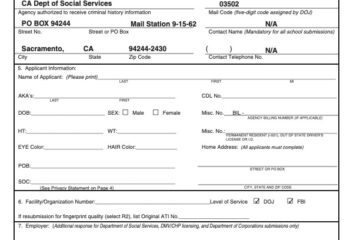
In today’s digital age, the convenience of technology has revolutionized many aspects of our lives, including the way we handle sensitive information like fingerprints. However, when it comes to applying for licenses outside of California, the traditional method of ink fingerprints still holds significant importance.
At Anshinotary, we understand the unique requirements of individuals seeking licenses in states that mandate ink fingerprints. While digital fingerprints have become more common and accessible, certain states still require ink fingerprints for licensing purposes. This traditional method involves the manual process of imprinting the individual’s fingerprints onto a card using ink, ensuring a clear and accurate representation of their unique identifiers.
The use of ink fingerprints for out-of-state license applications serves several crucial purposes. Firstly, ink fingerprints are considered to be more reliable and accurate compared to digital fingerprints, as they provide a physical copy of the individual’s unique patterns. This ensures that the fingerprints can be easily verified and authenticated by the relevant authorities, reducing the chances of errors or discrepancies in the application process.
Additionally, ink fingerprints are often required by states to maintain consistency and standardization in the licensing process. By adhering to the specific requirements of each state, applicants can ensure that their application is compliant with the regulations and guidelines set forth by the licensing authorities.
While digital fingerprints offer convenience and efficiency, the use of ink fingerprints for out-of-state license applications remains a vital component of the licensing process. At Anshinotary, we are committed to providing reliable and professional ink fingerprinting services to support individuals in their licensing endeavors, ensuring that their applications meet the necessary requirements for states that mandate ink fingerprints.
If you are applying for a license outside of California and require ink fingerprints, trust Anshinotary to provide you with the accurate and dependable services you need. Contact us today to learn more about our ink fingerprinting services and how we can assist you in your licensing journey.


